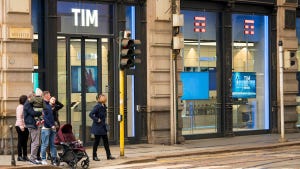Lumentis Cuts Metro Costs
Plans to unveil gigabit Ethernet modules for its economy-sized DWDM access rings at CeBIT
February 26, 2002

Most startups begin life by promising more than they can deliver. Sweden's Lumentis AB says that it's done the reverse: The metro DWDM equipment that it will show at Germany's CeBIT exhibition will actually do more than originally billed.
Lumentis's big claim to fame is that it's found a new way of reducing losses on DWDM access rings. As a result, each access ring can serve a large number of user sites spread over a wider area, without requiring amplifiers. This equates to fewer access rings and thus fewer hubs to link them to the core network.
The bottom line, in theory, is a significant reduction in equipment costs. Last year, Lumentis was claiming a two- to fourfold reduction in overall capital costs, based on a maximum unamplified ring of 65km of fiber carrying 16 wavelengths (see Lumentis Faces Metro Challenge).
Lumentis now says it was being too modest. It's commissioned a lab, Validation AB, to conduct tests that indicate that its equipment could support an unamplified 98km fiber access ring, handling 40 wavelengths. A four-page summary of the test can be downloaded here: Lumentis System Verification
It's important to remember that these are lab conditions. Validation used standard G.652 fiber for its test and measured its average loss as 0.27 dB/km. In real-life conditions, losses can be twice that figure, halving the maximum size of the unamplified ring, according to experts. The fact remains, however, that operators should be able to build bigger access rings, albeit not 98km rings, using Lumentis's equipment.
Competitors point out that this is also theoretical. Being able to build economy-sized access rings might help a greenfield operator building a metro network from scratch, but there aren't many of those these days. It's the incumbent carriers that still have dollars in their pockets. Unfortunately, however, they already have fiber in place, which may dictate the size of access ring they can install.
Still, Lumentis has other secrets up its sleeve. At CeBIT, it plans to announce a new module for its metro gear that crams two channels of gigabit Ethernet into a single OC48 (2.5 Gbit/s) wavelength.
Lumentis has yet to announce trials but it's getting a lot of interest in its equpment from mobile operators, according to Anders Lundberg, its CEO. The rollout of next-generation wireless technology is forcing these carriers to boost bandwidths on their terrestial backbones. Lumentis equipment provides a way for them to accomodate this increase without having to lay out a lot of cash up front. They can add modules, giving them circuit or packet capacity, as they need it. They can also rearrange networks quickly as circumstances change, according to Lundberg.
"Operators rolling out next-generation wireless networks need to be able to ramp up network capacity quickly and flexibly, at very low cost," says Lundberg. "The latest metro DWDM developments will help them do this."
At CeBIT, Lumentis is in Hall 27, booth F38.
— Peter Heywood, Founding Editor, Light Reading
http://www.lightreading.comFor more information on CeBIT, please visit: www.lightreading.com/cebit
You May Also Like










